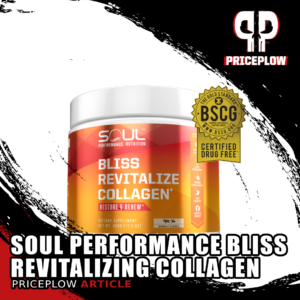
Soul Performance is out with a new beauty and wellness collagen product backed with the power of Velositol from Nutrition21.
Soul Performance Nutrition, an up-and-coming supplement startup founded by Matthew Karich, has been a PricePlow favorite ever since we interviewed Karich on The PricePlow Podcast Episode #068, and even before that since Matt's quite active in the PricePlow Discord community.
Soul Performance's formulas have been one home run after another. Their meticulously engineered approach to popular supplement concepts have turned a lot of heads and impressed a lot of industry insiders very quickly.
Introducing Soul Performance Bliss Revitalizing Collagen
Today we're talking about Soul Performance's collagen supplement, Bliss Revitalizing Collagen. This product explores the concept behind collagen supplementation, which is to improve health and wellness —particularly skin quality.
But "Bliss" also utilizes a new approach that we believe will improve collagen's uptake - which is a concern since we fear that too many consumers are still buying collagen supplements for the protein, when it's really more nuanced than that.
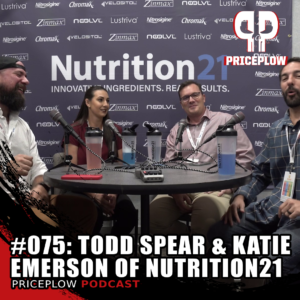
Todd Spear and Katie Emerson of Nutrition21 join the PricePlow Podcast at SupplySide West 2022 to talk research, trends, nitric oxide supplements, and more!
A collagen protein paired with Nutrition21's Velositol
As most of our readers know, collagen doesn't have the most "muscle-centric" amino acid profile, but just in case, they're attempting to boost amino acid uptake as much as possible with Nutrition21's Velositol. This is exactly what we had debated with Nutrition21 in PricePlow Podcast Episode #075, and it turns out Matt and his team had the combination in here all along!
Beyond that, Soul took a pretty enlightened approach to the rest of the formula as well. Besides the typical skin-health boosting ingredients, we see a heavy emphasis on controlling inflammation and improving glycemic control, two huge factors in skin health that don't get nearly as much attention as they should.
Soul Performance Nutrition Bliss Revitalize Collagen – Deals and Price Drop Alerts
Get Price Alerts
No spam, no scams.
Disclosure: PricePlow relies on pricing from stores with which we have a business relationship. We work hard to keep pricing current, but you may find a better offer.
Posts are sponsored in part by the retailers and/or brands listed on this page.
Soul Performance Nutrition Ingredients
In a single 1-scoop (19.5 g/0.68 oz) serving of Bliss Revitalize Collagen from Soul Performance, you get the following:
-
Bovine Collagen Peptides – 12,000 mg
Bliss uses bovine collagen peptides, which consist primarily of collagen type I and collagen type III. In all, there are five types of collagen, and each is thought to have a different role in the human body.
Collagen types I & III
Collagen type I is the most common type of collagen in mature connective tissue, like tendons and ligaments. The body uses collagen type I to support heavy loads.[1]
Collagen type III is important for healing tissue damage caused by inflammation. Chronic inflammation is a growing health concern for many, thanks to toxins commonly found in the environment. This kind of collagen can be especially important for athletes and bodybuilders, since exercise itself causes acute inflammation.[2]
In the case of exercise, of course, inflammation is generally a good thing because it triggers the body's adaptive response, which is the reason most people exercise. Still though, you want to make sure that your body has the raw materials it needs to heal from the hormetic stress of exercise – and that's where a high-quality collagen supplement comes in.
Although isolated collagen peptide types are on the market, it's generally a good idea to take naturally-sourced collagen-like bovine collagen peptides. This is because a natural source of collagen contains appropriate ratios of various collagen. That's true of collagen types I and III – you don't want too much of one relative to the other, because this can disrupt your body's ability to maintain a good balance between rigidity and elasticity in connective tissues.[3]
Collagen types I and III may also have synergistic effects in some bodily processes, i.e., they work together to play an important role in wound healing.[4]
One study found that mice who took bovine collagen supplements had significantly improved skin quality and collagen fiber repair, higher collagen skin content, and a normalized ratio of collagen type I to collagen type III. All of these can be taken as anti-aging effects in skin.[5]
The normalization of the mice's collagen type I and type III ratio is especially interesting, for the reasons discussed just above.
Bovine collagen may also help bones remineralize by enabling the growth of osteoblasts, cells that help increase bone mass.[6]
No surprise, then, that another study found supplementing bovine collagen can actually prevent osteoporosis in aging mice.[7]
So what about human research? Well, a randomized, double-blind, placebo-controlled study in healthy women over the age of 35 found that taking bovine collagen for 12 weeks significantly improved the quality of their skin. By the end of the study period, the women had much better skin smoothness, hydration, and elasticity - and these results were measured with precise instrumentation.[8]
Glycine vs. methionine – the metabolic importance of collagen
Soul Performance has an awesome catalog of products worth checking out for dialing in general health and wellness.
Because collagen can be so great for your skin, the discussion of supplements tends to fixate on its cosmetic effects.
But believe it or not, collagen is important for metabolic health as well.
Glycine-to-methionine ratio is an important factor in metabolic health. Getting too much methionine and not enough glycine can actually increase cortisol blood levels, mimicking the metabolic effects of stress and muscle catabolism.[9,10]
As it turns out, collagen is an incredible source of glycine. Taking in more glycine from collagen can help blunt the body's metabolic stress response.[10]
So why does this matter? Well, the metabolic effects of glycine deficiency are serious. It's a risk factor for obesity and metabolic syndrome.[11]
Some nutritional theorists have even argued that restricting dietary methionine could be a viable technique for extending lifespan and improving human health, because it increases the body's glycine-to-methionine ratio from the other direction.[12-14]
With all that in mind, it may not be a huge surprise that supplementing with collagen can also improve cardiovascular health. This is because glycine can, thanks to its effects on methionine metabolism, reduce blood levels of homocysteine, an amino acid that has been identified as an independent risk factor for cardiovascular disease.[15,16]
The interplay between glycine and homocysteine might even have a role in psychiatric disease. Although the causality is not totally clear, researchers have repeatedly observed that schizophrenia patients tend to have high homocysteine and low glycine.[17,18]
Limitations of collagen?
While it's great for your health, don't count on collagen as an anabolic protein. It just so happens that the amino acid blend in collagen is largely devoid of the specific aminos that activate mammalian target of rapamycin (mTOR), which is an important part of the anabolic response.[19]
Unfortunately, some are still using it for that purpose -- although the world now seems far more educated on this subject than it was in the prior decade. But just in case we need to eek out as much amino acid potential from the collage, Soul Performance has added Velositol from Nutrition21.
-
High amylopectin starch (waxy maize) (from Velositol) – 2,000 mg
Velositol is a patented ingredient from Nutrition21 that consists of chromium picolinate, chromium histidinate, and amylopectin starch.[20] Its function is to increase the bioavailability of dietary protein and the amino acids inside.
Nutrition21 got the idea for Velositol from their big commercial success Chromax, a trademarked form of chromium with much higher bioavailability than generic forms of chromium. Chromax has been tested in over 50 different peer-reviewed journal studies,[21] which have vouched for its insulin-sensitizing properties.
Chromium's effect on insulin naturally makes it a great glycemic control supplement, with significant metabolic benefits. What Nutrition21 realized is that since improved insulin signaling in muscle tissue can also improve amino acid transport, this means that chromium could improve protein bioavailability as well.
Since its release, Velositol has been mostly paired with whey protein powders in order to increase muscle protein synthesis, but here it's used in an attempt to increase collagen bioavailability.
Since, as we discussed above, collagen supplementation probably isn't going to do much for your anabolic response,[19] this marks a little bit of a departure from Velositol's standard use case of increasing muscle growth by enhancing anabolic protein uptake.
Made by Nutrition 21, the experts in Chromium and Insulin management, Velositol can boost Muscle Protein Synthesis by using chromium and a 'tickle' of insulin-spike from amylopectin!
This is a pretty cool little innovation, and what we consider a "cutting edge" use of Velositol that will admittedly have less research behind it. In fact, when Soul Performance launched Bliss Revitalizing Collagen last summer, Matt Karich came on The PricePlow podcast and Velositol was one of the main topics we covered.
We had another conversation about this during a lively podcast we did at SupplySide West 2022 with Nutrition21's Todd Spear and Katie Emerson – the consensus here is that using Velositol in this way should work pretty well!
But there is a caveat. Although collagen-specific data on Velositol doesn't exist yet, data from non-collagen studies strongly suggests that Velositol should increase the bioavailability of collagen's amino acids:
In a study where researchers examined the effect of Velositol (ACr) on serum concentrations of all 19 known amino acids, a combination of branched-chain amino acids (BCAAs) and Velositol was found to outperform BCAAs alone.[22]
For example, an animal study in Wistar rats found that giving branched-chain amino acids (BCAAs) along with ACr boosted the animals' serum concentrations of all amino acids more effectively than BCAAs alone. Compared to controls, Velositol notably increased the rats' leucine levels by 87%, isoleucine levels by 70%, and valine levels by 18%.[23] These three aminos are the BCAAs, so this is pretty good evidence that Velositol increases amino acid bioavailability.
In one way, "collagen" is just a cluster of specific amino acids in peptide bonds. So, in theory, we should see the same effect when stacking Velositol with collagen.
Some larger brands would possibly wait for a full study performed on Velositol with collagen before going mainstream with such a combo. Otherwise, they really couldn't really make "claims" on it. But when you're quick and nimble like Soul Performance Nutrition is, and have a well-informed customer base, you can live a bit more on the cutting edge.
In this situation, we believe that their decision to pair these two ingredients together is a smart one.
Other effects of Velositol – chromium
Since Bliss Revitalizing Collagen is primarily a health and wellness supplement, we should also take a minute to talk about some of the other awesome effects you can expect to see from the huge dose of chromium used in Velositol.
Chromium is an essential trace mineral that helps keep blood glucose levels under control by improving the all-important insulin signaling in your body.
More specifically, it does this by supporting cellular glucose uptake, which is one reason why chromium is an increasingly popular ingredient in glucose disposal agents.
Examples of good chromium food sources include meat, poultry, eggs, cruciferous vegetables, grapes, and whole grains.[24]
Chromodulin
Chromium enhances insulin signaling by interacting with an oligopeptide called chromodulin.[25,26] Chromodulin works to upregulate insulin receptors on the surface your body's cells, which helps those cells take up glucose.[27] Once the glucose is in your cells, it's no longer in your blood, which explains chromium's blood sugar-lowering effect.
Chomodulin does all of this by actually imitating insulin. But it isn't just an insulin impostor – it can also enhance the function of insulin itself, creating synergistic effects.[28]
Chromium activates adenosine monophosphate-activated protein kinase (AMPK)
Chromium can also upregulate the enzyme AMPK,[29] yet another effect mediated by chromodulin.[30]
AMPK basically tells your mitochondria how much energy to produce, which has a direct effect on the number of calories you burn in a day.[31,32] Upregulation of AMPK can improve body composition in the long run by increasing fat burn and muscle synthesis.[33]
There's nothing more important for general wellness than metabolic health, so it's great to see a big dose of Velositol-bound chromium in Soul Performance Bliss Revitalizing Collagen.
-
Adansonia digitata Fruit Powder (Organic) – 1,000 mg
We touched on glycemic control in the chromium section above. Maintaining healthy blood sugar levels is crucial for optimal health on a number of levels, but it's especially important for skin health, which is one of the main reasons that the average supplement consumer wants to take collagen supplements.
In fact, insulin resistance and the associated hyperglycemia have some pretty nasty skin manifestations, which include acrochordons, acanthosis nigricans, androgenetic alopecia, acne, and hirsutism.[34]
So if you want to improve your skin health, one of the best first steps you can take is getting insulin resistance and hyperglycemia under control.
Adansonia digitata, also known as baobab, is another ingredient that can help you do this.
A randomized controlled trial on Adansonia digitata found that it's capable of significantly reducing postprandial blood glucose levels – that is, blood glucose levels immediately following a meal – compared to a placebo control.[35]The mechanism of action here seems to be the high polyphenol content in Adansonia, which includes epicatechin and procyanidins.
Epicatechin is famous as the primary bioactive constituent of green tea, and has been studied extensively for its antioxidant, fat-burning, and anti-diabetic effects, and is regularly covered on the PricePlow Blog.
Adansonia digitata supplementation significantly reduced postprandial (after a meal) blood glucose levels, compared to a placebo control.[36]
The procyanidins are pretty awesome too. Procyanidin B2, one of the procyanidins found in Adansonia, has a powerful ability to protect insulin-secreting pancreatic beta cells from metabolic stress. This is great, since keeping those beta cells healthy is one of the keys to long-term metabolic health.[36]
Another study found that Adansonia can actually inhibit the absorption of dietary carbohydrate, so this is probably another factor in its ability to reduce postprandial glucose levels.[37]
Anti-inflammatory and antioxidant effects
Other studies have found that Adansonia can have significant anti-inflammatory and antioxidant effects.[38,39]
-
Tremella (Tremella fuciformis) Fruit Body Mushroom Extract – 1,000 mg
Tremella fuciformis, also known as white fungus, is an edible mushroom that naturally grows in tropical climates.[40] It's been used for centuries in traditional Chinese medicine (TCM) to treat a wide range of ailments.[41]
An animal study found that Tremella fuciformis reduced blood glucose levels in diabetic rats by an impressive 52%.[42] The fungus appears to have this effect by upregulating peroxisome proliferator-activated receptor gamma, a receptor that activates genes associated with insulin activity and the oxidation of both glucose and fatty acids.[42,43]
Other evidence suggests that Tremella has immune boosting, neuroprotective, antioxidant, and anti-inflammatory effects.[44] It's also been studied as a skin health supplement, which is more good news for anyone who's interested in taking collagen for their skin.[44]
Tremella is not a very common ingredient – we've never written about it before – and the research seems to be in its infancy. So far, we think the best substantiated effect of Tremella is its insulin sensitizing, anti-diabetic properties. That's great, because assuming all the proposed benefits of Tremella supplementation do apply to humans, we think the metabolic benefit would be the number-one effect to write home about.
Once again – proper insulin signaling and glycemic control is crucial for optimal health and optimal appearance!
-
Turmeric (Curcuma longa) Root (White Curcuminoids) Extract (Curowhite) – 250 mg
Turmeric is a spice that belongs to the Zingiberaceae family, which also counts ginger as a member.
Various components of the turmeric plant, but particularly the root, have been used for millennia by traditional medicine systems all over the globe to treat many different medical complaints.[45]
The turmeric extract used in Curowhite is standardized for a phytochemical called curcumin, which is also the pigment that gives the turmeric rotors their bright orange and yellow colors.[46]
Curcumin: a primer
Turmeric plants naturally contain about 3% curcumin by weight,[47] and it's only one of several different curcuminoids that occur naturally in the turmeric plant.
Curcumin is probably the most extensively studied, and gets most of the ink in discussions on the topic, but it appears that all the curcuminoids in turmeric have broadly similar protective effects on human health.[48]
All curcuminoids, including curcumin, exhibit antioxidant[11,49-54] and anti-inflammatory[55-60] properties, which is why many researchers regard the curcuminoids as having serious potential in the prevention of serious disease, particularly in the liver, cardiovascular system, and brain.[61]
The broad spectrum similarities between curcuminoids is probably why curcumin and turmeric have nearly identical benefits to human health.[62]
Curcumin's anti-inflammatory effects
Curcumin has been shown to downregulate the cyclooxygenase-2 (COX2-) enzyme,[63-65] the same enzyme targeted by non-steroidal anti-inflammatory drugs like aspirin and ibuprofen. Downregulation of COX-2 can decrease your body's synthesis of prostaglandins,[66] a class of inflammatory cytokines that drive inflammation.
Curcumin's effects on cardiovascular health
Endothelial dysfunction, a condition where the smooth muscle layer that lines the interior of arteries stiffen and loses its ability to expand and contract, is a huge factor in the onset and progression of cardiovascular illnesses like heart disease.[67]
Curcumin has been shown to improve endothelial function,[68] and perhaps even reverse the progression of heart disease.[69,70] Its cardioprotective effect is closely related to the anti-inflammatory benefits we discussed above – chronic inflammation is one of the primary mechanisms behind endothelial dysfunction.[71]
One study found that heart disease patients supplemented with curcumin had a 65% lower risk of heart attack during their hospital stay, compared to a placebo group.[72]
Curcumin's neuroprotective effect
A big meta-analysis of randomized controlled trials, published in 2019, found that curcumin can upregulate a protein called brain-derived neurotrophic factor (BDNF),[73] which is responsible for promoting synaptic plasticity and dendrite growth in the brain.[74] BDNF drives adult neurogenesis in specific regions like the hippocampus.
In fact, curcumin can increase BDNF concentrations so much that it can actually alleviate neuroinflammation-associated symptoms that lead to poor mental disposition, and has been proposed as an adjunct treatment for serious mood issues.[75]
The brain is uniquely vulnerable to oxidative stress,[76] making it a canary in the coal mine for a person's overall antioxidant status. It says a lot about curcumin's anti-inflammatory and antioxidant power that it can improve brain health this way.
In fact – surprise! – chronic inflammation has been shown to downregulate BDNF, so this is yet another benefit that's associated with curcumin's anti-inflammatory powers.[77]
Other curcumin benefits
Curcumin has also been found to improve symptoms of chronic pain[78-91] and osteoarthritis.[78-91]
It may also promote good digestion in people with gastrointestinal dysfunction,[92] and proper liver function in alcoholics.[93]
Summing up curcumin
Suffice it to say, curcumin supplementation comes with a lot of potential benefits, mostly because of its powerful ability to reduce inflammation in the body.[94] Since chronic inflammation is a growing public health problem, a little extra anti-inflammatory support definitely can't hurt for most of us. This is especially true of people living in Western countries, where turmeric is not widely used.
-
Astrion NuLiv Proprietary (from Astragalus membranaceus and Centella asiatica) Root Extracts – 250 mg
There are three major factors associated with good skin health:
- Collagen integrity
- Ample supply of hyaluronic acid, and
- Inhibition of matrix metalloproteinase (MMP) activity
Meet Matt Karich, an engineer who's putting his talents to use in the dietary supplement industry, with refreshingly unique, third-party tested formulas. We discuss this and more in PricePlow Podcast #068.
If your body fails to meet any one of these three conditions, your skin will begin to wrinkle, dehydrate, and develop other issues.
This is where Astrion from NuLiv Science comes in. It consists of Astragalus membranaceus and Centella asiatica extracts, which have both been used in traditional medicine systems for hundreds of years.
These extracts were chosen because they contain bioactive constituents that can help nourish and increase skin's radiance.
These bioactive constituents are, mainly:
- Astragalosides (from Astragalus)
- Asiaticoside and other triterpenes (from Centella)
Astragalosides (AST) are saponins that occur naturally in Astragalus membranaceus. They've been shown to benefit human health in a variety of ways, regarding antioxidant, cardioprotective, anti-asthmatic, and immunoregulatory activity. One thing that makes astragalosides special is their ability to cross the blood-brain barrier, and protect neural tissue from oxidative stress. Most orally-administered antioxidants can't do this.[49]
There are four kinds of astragaloside: ASTs I, II, III, and IV. It's usually the case that all four are taken and studied together, as part of a full-spectrum Astragalus extract. However, individual astragalosides have been studied over the years.
Astragaloside's protect skin cells and maintain collagen
One 2014 study found that AST IV can both prevent collagen damage caused by ultraviolet (UV) light, and inhibit MMP expression in UV-exposed skin cells.[95]
A 2012 study found that AST II can protect a type of skin cell called fibroblasts, increasing their survivability in the face of UV light by an incredible 142.8%.[22]
Both studies also concluded that treatment with ASTs should even benefit cells that aren't exposed to UV light, because of how astragalosides help support collagen maintenance.[22,95]
Asiaticoside triggers hyaluronic acid production and the synthesis of new collagen
The glycoside triterpene asiaticoside comes from a plant called Centella asiatica, more commonly known in the West as gotu kola.
Most gotu kola extracts are standardized for asiaticoside, as it's considered to be the primary bioactive constituent of the plant.
A patented combination of Astragalus membranaceus and Centella asiatica extracts, Astrion provides skin rejuvenation and hydration through enhanced
endogenous production of collagen & hyaluronic acidA 2013 research review concluded that gotu kola extracts, because of the asiaticoside and madecassoside gotu kola contains, can:
- Increase protein, collagen, and hydroxyproline levels in skin wounds[96]
- Speed-up the metabolism of lysine and proline, two important collagen building blocks[96]
- Cause hyaluronic acid production in skin wounds[96]
- Trigger collagen synthesis in fibroblasts[96]
Astrion-specific research
So now that we've gone over Astrion's individual constituents, what does the research say about Astrion as a supplement?
A dozen different in vitro studies have found that Astrion can upregulate collagen type I in epidermal cells by about 60%, and in dermal cells by 80%. Astrion also seems to upregulate type III collagen in dermal cells, with a 30% boost in synthesis and an 80% boost in secretion. It can also increase hyaluronic acid production by 20% in epidermal cells.[97]
The first-ever clinical trial of astrion found that people who took it experienced a 15% reduction in the appearance of wrinkles and a 17% reduction in melanated sunspots.[97]
-
L-tryptophan – 100 mg
As we were discussing earlier, collagen doesn't contain much of certain key aminos. And as it turns out, collagen is totally devoid of tryptophan.
Tryptophan is an essential amino acid, which means your body can't make it, so you have to get it from food or supplements. It's also a serotonin precursor.
As dusk approaches, your body converts tryptophan into melatonin, the world-famous sleep hormone many have used to support sleep or even get over a crippling case of jet lag.[98]
This conversion pathway is, briefly:
- Serotonin L-tryptophan to 5-hydroxytryptophan (5-HTP)
- 5-HTP to serotonin via the enzyme aromatic L-amino acid decarboxylase
- Conversion of serotonin to N-acetyl-serotonin via the enzyme hydroxyindole-O-methyltransferase
- Conversion of N-acetyl-serotonin to melatonin[99]
Tryptophan can even be used to generate NAD+,[100-103] an essential energy-carrying molecule that supports countless processes in the body. Note, however, that it's a long process to get from tryptophan to NAD+, and is on average 1/60 as strong as just taking niacin (as nicotinic acid).[104]
We want to avoid tryptophan deficiency,[105] so any little bit helps. The higher-end collagen supplement manufacturers usually add some just to help complete the amino acid profile of the collagen.
-
Astragin (Astragalus membranaceus [Root] & Panax notoginseng [Root]) Extract – 50 mg
AstraGin works to increase the bioavailability of other ingredients. In other words, many ingredients taken with AstraGin will probably work better because of its ability to improve absorption.
AstraGin does this by upregulating adenosine triphosphate (ATP) in your intestinal cells, which can then use that ATP to perform the extremely useful work of absorbing nutrients.[106,107]
Because of the significant value-add for the supplement consumer, AstraGin is becoming increasingly popular with manufacturers and consumers alike.
Over 20 published studies have attested to the benefits of AstraGin and its bioactive constituents.[108,109]
-
Fruit and Vegetable Blend (Dermaval) (Pomegranate concentrate, Green Garden Asparagus officinalis concentrate, Abelmoschus esculentus concentrate, Coffea arabica concentrate, Acerola Cherry, Camu Camu, Sophora japonica concentrate, Acai Berry, Mangosteen concentrate, Maltodextrin) – 50 mg
Anyone who's concerned about skin health needs to read up on the elastase enzymes, which break down proteins in the extracellular matrix that provides structure for our body's tissues. Increased expression of one of these enzymes, elastase 2 or human neutrophil elastase (HNE), is associated with degeneration and inflammation of the skin because it breaks down collagen type IV and elastin, both of which are crucial for healthy skin tissue.[110,111]
Put simply, inhibiting HNE can potentially support your goal of maintaining healthy skin as you age.
One of the triggers for HNE release is eating – the elevations in blood glucose that we typically see after consuming carbohydrates[112,113] have been shown to increase HNE expression.
What Dermaval does is help prevent these glycemia-driven HNE releases. The interesting nuance here is that Dermaval does not appear to reduce postprandial blood glucose levels – it just stops the HNE release in response to the glycemia.[114]
-
Vitamin C (as Ascorbic Acid) – 500 mg (556% DV)
Vitamin C is famous as an antioxidant immune boosting supplement, and many of us have taken vitamin C with zinc to help get over a pesky cold.
But did you know that your body needs lots of vitamin C for ample collagen production?
According to a 2018 meta-analysis of 10 different studies, vitamin C supplements can increase synthesis of collagen type I,[115,116] the kind of collagen that's most abundant in mammals and probably the best-studied of all collagen types.
On the other hand, research shows that skin cells need vitamin C for collagen synthesis. So just like extra C can boost collagen production, a C deficiency might bring it to a screeching halt.[117]
Some of vitamin C's skin benefits are actually related to its antioxidant properties. For example, your skin naturally contains high concentrations of vitamin C, which provides protection from potentially damaging effects of ultraviolet light exposure.[117]
Believe it or not, research indicates that oral supplementation with vitamin C might be even better at protecting your skin than topical application, since systemic C increases skin concentrations more effectively.[117]
-
Magnesium (from Magnesium Bisglycinate Chelate) (TRAACS)) – 120 mg (29% DV)
Magnesium is a crucial electrolyte mineral with a huge impact on human health. It's involved in hundreds of different metabolic processes and enzymatic reactions, which affect important functions like blood sugar control, cellular energy production, and arterial function.[118]
Insulin resistance and impaired cardiovascular function can both negatively affect skin quality, and are typical signs of magnesium deficiency.[120,121] A nice little boost of magnesium, 29% of the RDA, can definitely go a long way toward preventing such a deficiency.
Supplementation with magnesium has never been more important – modern agricultural practices are rapidly stripping our soils of several key minerals, including magnesium, so we aren't getting as much magnesium from our diets as we used to.[120,122-126]
We love seeing the TRAACS amino-chelated form of minerals, because of their superior bioavailability.
Available Flavors
Bliss Revitalize Collagen initially released in one flavor, Milk Tea, and it's a highly unique flavor. Utilizing Oatsy powder to thicken it, Soul has created a truly satisfying texture that seems like it has multiple levels to it. It feels like a luxury when drinking it.
Here's an updated list of all Bliss flavors in case more come out in the future:
Conclusion: Bliss Collagen Has Soul
This isn't just a collagen supplement, it's a total health and wellness stack with an emphasis on metabolic health, which as most of us know by now, is the "Mac Daddy" of overall long-term health.
We're excited to see Velositol making an appearance as an adjunct to collagen supplementation. Based on the research we've read about Velositol increasing BCAA and whey absorption -- supporting better muscle protein synthesis with whey -- and we can't think of a reason why it wouldn't work in this application. Hopefully this innovation will inspire the industry to do some research on collagen-specific Velositol supplementation.
Soul Performance Nutrition Bliss Revitalize Collagen – Deals and Price Drop Alerts
Get Price Alerts
No spam, no scams.
Disclosure: PricePlow relies on pricing from stores with which we have a business relationship. We work hard to keep pricing current, but you may find a better offer.
Posts are sponsored in part by the retailers and/or brands listed on this page.
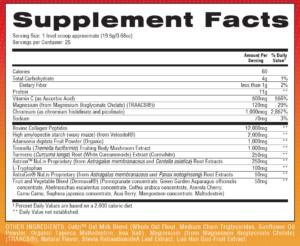
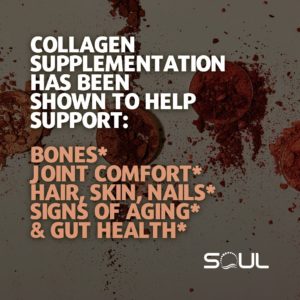
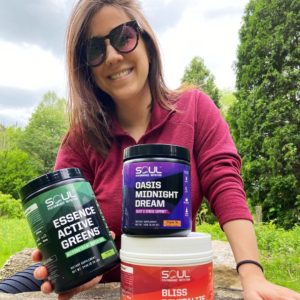
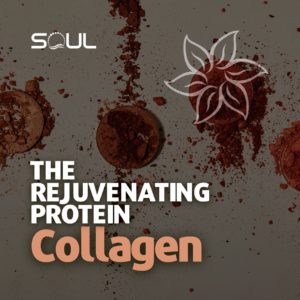

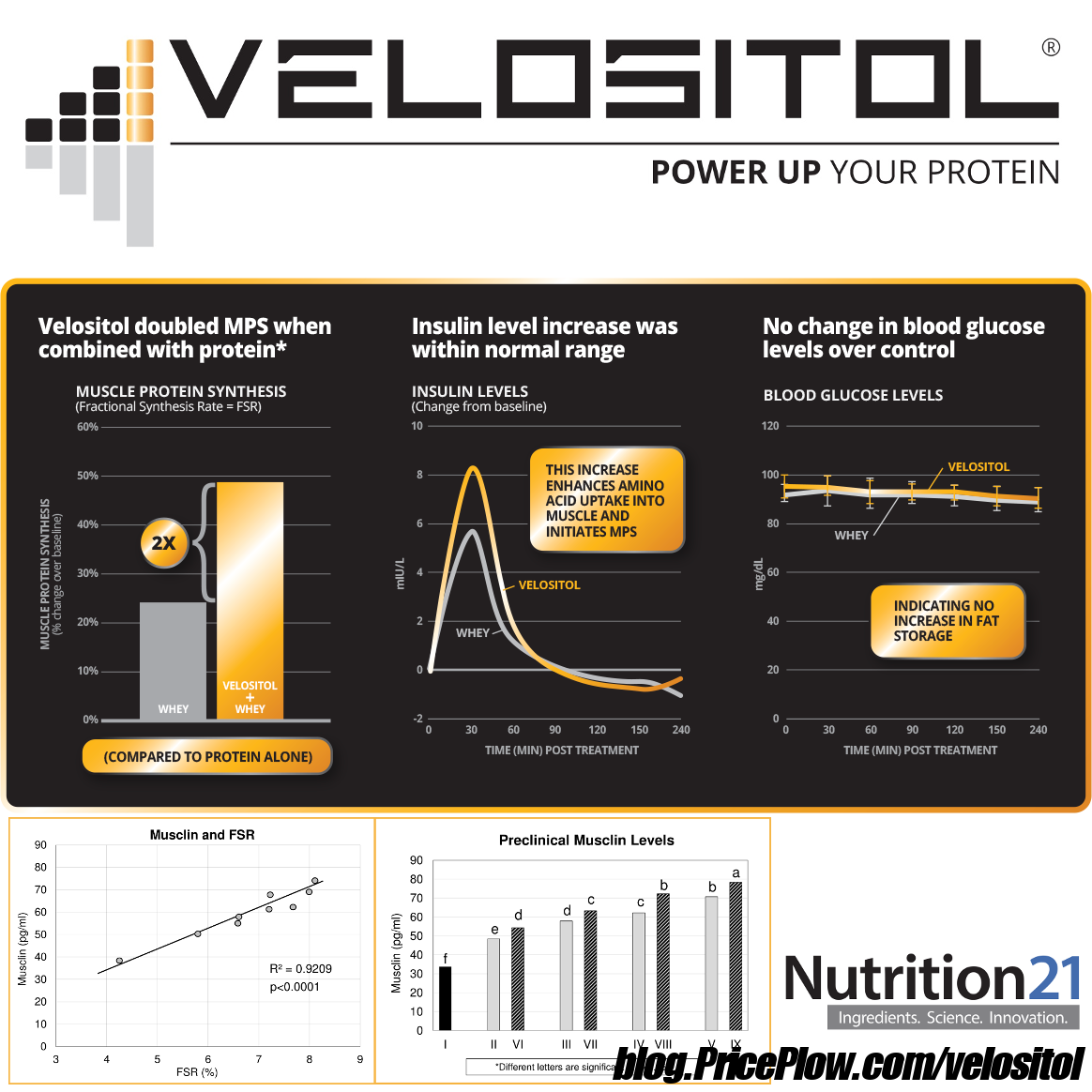
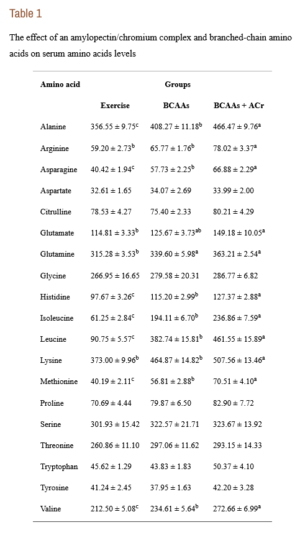
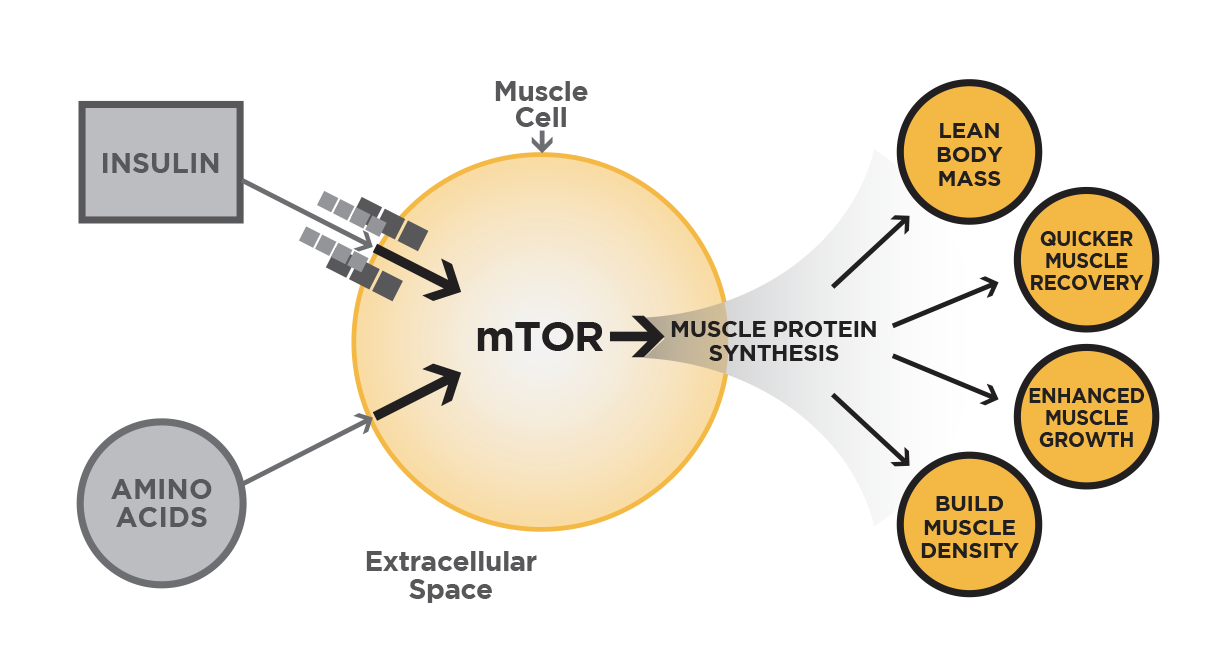
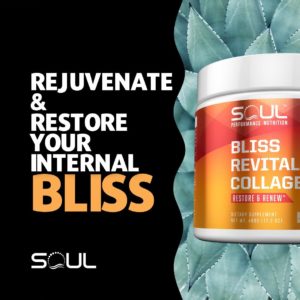
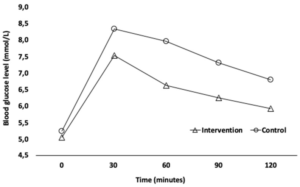
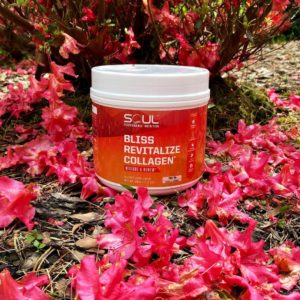
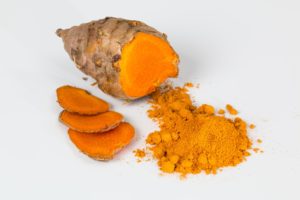
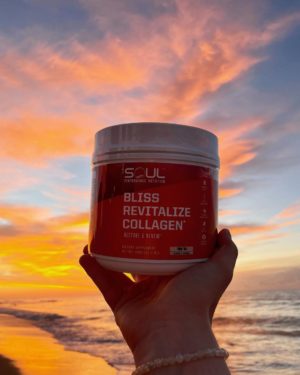
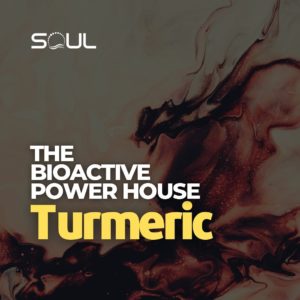
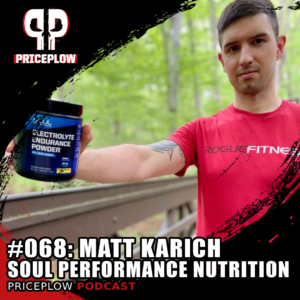
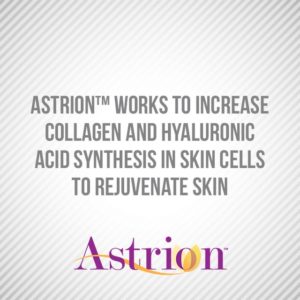
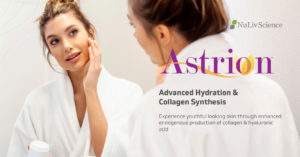
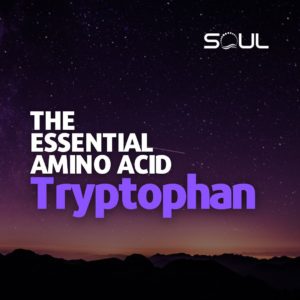
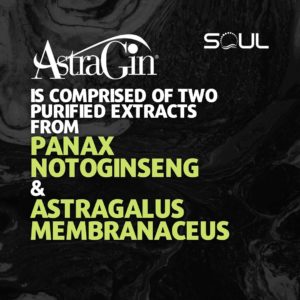
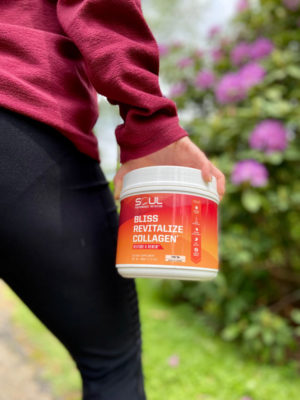
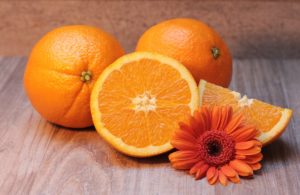
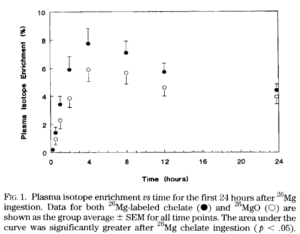
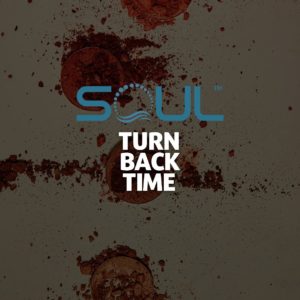


Comments and Discussion (Powered by the PricePlow Forum)